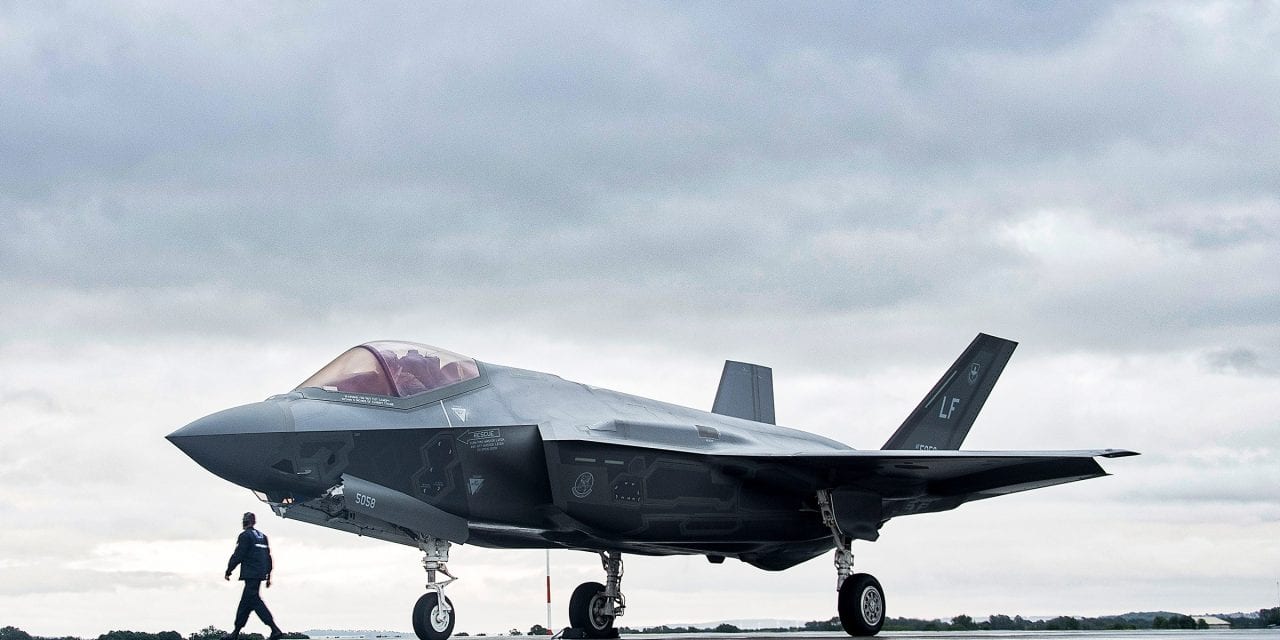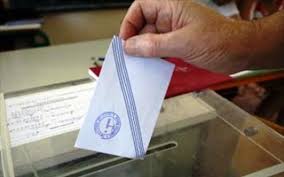By Jarod Taylor, lawfareblog.com
The United States has taken several escalatory steps in recent months to suspend delivery of F-35 fighter jets to Turkey, currently scheduled for November 2019.
On Feb. 15, the Consolidated Appropriations Act of 2019 (§ 7046) restricted funding for the delivery of F-35s to Turkey absent a report on Turkey’s pending purchase of Russian S-400 missiles, due by November 2019. On April 1, the Pentagon officially announced the suspension of the delivery of two F-35 fighter jets to Turkey. Additionally, several bills have been introduced in Congress proposing further restrictions on the sale of the F-35 jets to Turkey (namely S.922, the “Protect NATO Skies Act of 2019,” and S.1102, the “Eastern Mediterranean Security and Energy Partnership Act of 2019”).
All this is in response to Ankara’s purchase of the Russian S-400 air defense system, which the U.S. fears will jeopardize the F-35’s critical stealth features. The S-400 was developed by Russia to identify and destroy fifth-generation fighter aircraft like the F-35, and the Pentagon claims that Turkey simultaneously operating the F-35 and S-400 in the same zone would give Russia access to detailed radar return data from the F-35. Senior Turkish officials suggest that the risk to the F-35 can be mitigated, but recent proposals to further study the technical issues were rebuffed by Washington.
If Turkey, a NATO member, moves forward with the purchase of the S-400 (which President Recep Tayyip Erdogan has signaled he intends to do), it may lead not only to the cancellation of the F-35 transfer but also to the United States removing Turkey from the nine-member F-35 production program. Either step (suspending the transfer of the F-35s or removing Turkey from the production program) raises a range of legal issues and further complicates an already difficult bilateral relationship.
Proposal to Deny the Transfer of F-35 Aircraft or Intermediate Components to Turkey
Members of the House and the Senate began introducing legislation restricting F-35 transfers to Turkey as far back as 2017, such as the fiscal 2018 National Defense Authorization Act (NDAA) amendment offered by Rep. David Cicilline. Three similar bills were introduced in 2018 (S.2781, S.2925, H.5863). Despite Defense Secretary James Mattis’s request to stay F-35-related legislative action, the fiscal 2019 NDAAand the fiscal 2019 Omnibus Authorization Act (§ 8123) both required reports from the Department of Defense and the Department of State concerning the S-400 and F-35 purchases. Although the administration provided a report addressing congressional concerns about the S-400 program, as mandated by the fiscal 2019 NDAA, Congress remained unconvinced that Turkey would safeguard the F-35 technology. The 116th Congress picked up the issue with the fiscal 2019 Consolidated Appropriations Act (passed February 2019), which prohibited any funds from being used to deliver F-35s to Turkey until the secretary of state submitted a report on the S-400 sale.
An international partnership of nine countries (U.S., U.K., Italy, Netherlands, Turkey, Canada, Australia, Denmark, and Norway) developed and now produces the F-35. Turkey joined the consortium as a Tier III partner by signing a supplement to the 2001 Joint Strike Fighter System Development and Design (JSF SDD) phase memorandum of understanding (MOU), and then provided an initial investment of $125 million, which has grown into more than $1 billion since 2002. However, the production agreement includes a revised governance structure in which Turkey is an equal member, not a “Tier III” development partner. Seven Turkish companies produce more than 800 components for the F-35, including parts of the airframe structure, landing gear, engine and wiring systems. Although several concurrent MOUs have been signed, the Joint Strike Fighter Production, Sustainment, and Future Development (PSFD) MOU is most relevant for the questions raised in the current F-35 dispute with Turkey.
No provision of the PFSD MOU appears to prevent the United States from suspending F-35 transfers to Turkey, despite Turkey’s role in production. The MOU is concerned with coordination and production issues among participants, providing dispute resolution mechanisms in case a member is unable to fulfill its commitments or if unforeseen circumstances disrupt production. It is unclear if the MOU dispute resolution mechanism has been used, although there is ample opportunity for the other consortium members to use the intellectual property and data protection policies in Sections IX and XII to raise a complaint about the S-400 purchase (by blocking Turkish imports of defense articles and equipment for production of F-35s). However, the MOU seems not to have foreseen a circumstance such as the one facing the consortium today, in which members are deadlocked over a fundamental political disagreement rather than a technical issue. Member countries retain full authority to suspend or halt the transfer of equipment, information or finalized F-35 jets based on national law as stated in Section 3.2.1.1.1.
As the United States is ultimately the first owner of each produced F-35, it has full authority to restrict transfers based on national law, without constraint by the MOU. Policies to suspend F-35 transfers to Turkey rely on the U.S. export control leverage incorporated into the F-35 MOUs. The 1976 Arms Export Control Act (AECA) applies to the transfer of completed F-35s to the consortium members and consensus-approved purchasers in the foreign military sales program, as well as the export of project information or project equipment necessary for foreign project work. The State Department can deny export licenses to transfer defense articles for a broad variety of reasons, and Congress can also vote to deny licenses, which is the mechanism that S.922 and S.1102 will use to deny F-35 transfers to Turkey if they become law. The transfer of F-35 airframes has been reported using the AECA’s Section 36(b) mechanism for other countries, such as transfers to Australia.
The potential of S-400 air defense missile systems to exploit F-35 data or intellectual property is a technical question, rather than one of policy. However, the 2006 PSFD MOU, the AECA, and bilateral and multilateral security agreements give the F-35 JSF consortium members the policy leverage to deny—or at least suspend—transfer of the aircraft, associated equipment, training and information to any of the other members if the project’s sensitive details are not adequately safeguarded. The U.S. government has clearly indicated that it believes this to be the case regarding Turkey’s purchase of the S-400 and intention to connect Russian systems to its integrated air defense network, and the U.S. is using its leverage within the MOU and the AECA to counter the potential negative effects of Ankara’s decision.
Proposal to Remove Turkey from the F-35 JSF Consortium
The alternative solution to addressing the S-400 purchase’s challenge to F-35 viability is to involuntarily terminate Turkey’s participation in the F-35 program. While Turkey produces critical components for the aircraft as well as additional armaments for the air system, and plans to host logistics facilities for the international sustainment effort, several prominent officials and national security analysts have loudly reminded the policy community that Turkey is replaceable within the consortium’s supply chain and production line.
Moreover, the threat of ousting Turkey from the program presents a significant economic threat to Turkey’s aerospace sector. The total $12 billion value of F-35 component production in Turkey is a huge sum compared to the annual Turkish aerospace and defense sector export volume of $1-$2 billion. The U.S. aerospace sector could easily fill in the gap with little impact on the $1 trillion F-35 program: The main impact on the program would be an estimated 18- to 24-month delay in delivering 50-75 F-35 air systems.
The PSDF MOU does not provide a legal mechanism for involuntarily ousting a signatory of the MOU from the program. Section XIX includes provisions for the mutual termination of the MOU or for a country’s voluntary withdrawal, but these provisions are mainly concerned with how the remaining participants will react to the withdrawal. An involuntary departure is not contemplated within the text.
U.S.-Turkey Relations on Ice: Path Dependency, the F-35 and CAATSA
The U.S. government has made clear that it is prepared to deny the scheduled transfer of Turkey’s F-35s contingent upon delivery of Russian S-400s to Turkey. The Russian weapons are scheduled to be delivered in July 2019, giving the U.S. government time to verify Turkey’s decisions and then act prior to the scheduled F-35 transfer in November 2019. The costs Turkey will likely incur for acquiring the S-400 will eliminate its gains from incorporating the F-35 into its security and economy, but the losses will be greater due to automatically triggered secondary sanctions under the 2017 Countering America’s Adversaries Through Sanctions Act (CAATSA)(§ 231).
The recent history of U.S.-Turkey bilateral relations matters in this context. Unfortunately, the record suggests that both sides are bound by a degree of path dependency. While Washington and Ankara have had a multiyear discussion about fulfilling Turkey’s air defense requirements with American or NATO-interoperable systems, Ankara’s decision to acquire the S-400 after growing tired of waiting for Western technology piques an already stressed bilateral relationship aggravated by other major issues (arresting local national U.S. consulate employees, indicting American citizens on spurious charges, Turkish banks evading U.S. sanctions on Iran, divergent security strategies in Syria and Turkish extradition requests for the cleric Fethullah Gulen). The combined S-400/F-35 issue, due to the potential negative economic impact that might be delivered quickly following an election that rebuked Turkey’s unsustainable economic trajectory, threatens to stress unity between key members of the NATO alliance because Turkey’s realignment toward Moscow has significant domestic economic implications that could take effect just as Turkey enters a recession. There are few indications that deep Russian support is in the works to replace the loss of Western industrial and security cooperation, worth more than $12 billion to Turkish industry.
Turkey’s traditional alliances have been stressed since the beginning of the Arab Spring, when then-Prime Minister Erdogan tied Turkish foreign policy to Islamist uprisings across the Middle East and North Africa. In 2015, only four years ago, Turkey shot down a Russian Su-24 jet violating Turkish airspace, proving its air defense bona fides in a NATO alliance that feels increasingly challenged by Moscow’s expanding influence in Eurasia. Despite his willingness to police NATO airspace, President Erdogan apologized to Russian President Vladimir Putin less than a year later. This apology led to a shaky partnership between Turkey and Russia, particularly through military cooperation in Syria and joint participation in the Astana talks—areas where Moscow is a major stakeholder. Recognizing Turkey’s shifting political alignment from its NATO allies to Russia in areas of cooperation such as natural gas trade, nuclear energy development and now air defense system acquisition, General Curtis Scaparrotti declared his best military advice was to refuse the transfer of F-35s to Turkey in his final appearance before the Senate Committee on Armed Services as the commander of U.S. European Command.
If the S-400 is delivered to Turkey, the F-35 issues will be in some ways the least of Ankara’s problems. Purchasing Russian military equipment would trigger sanctions under CAATSA, which would not only reinforce the legal obstacles to F-35 delivery but also make it difficult to continue other foreign military sales with Turkey. Currently, the Turkish armed forces rely on licensed coproduction of American F-16fighter aircraft and Black Hawk helicopters to equip their armed forces. The secretary of state published a list of sanctioned Russia defense entities in 2017, and under CAATSA measures any parties that purchase significant defense articles from sanctioned Russian entities can face secondary sanctions including additional restrictions under the AECA. If the CAATSA law is applied to Turkey’s S-400 purchase, not only would the F-35 be restricted but the other F-16 and Black Hawk aircraft sales and licensing would be lost, which could cripple Ankara’s ability to sustain and modernize its equipment. Because of sunk costs in configuring specialized Turkish aerospace production lines, the loss of the F-35 program’s revenue promised to Turkish companies and loss of U.S. airframe production licenses would ultimately threaten the viability of the Turkish aerospace sector and likely prevent President Erdogan from achieving his aggressive defense industry growth goals (aspiring to export $25 billion per year in aerospace and defense articles by the 100th anniversary of the Turkish republic in 2023).
The imposed costs do not end with the F-35 and CAATSA. The S.1102 bill, even without yet becoming law, signals Congress’s changing sense of policy toward Turkey. The bill would break decades-long policy regarding security assistance toward Cyprus, decisively reinforcing Greece’s partners on the island. The bill also implicitly favors hydrocarbon discovery and development rights in the Eastern Mediterranean for the Greeks, Greek Cypriots and Israelis but rejects Ankara’s interpretation of underwater mineral rights in the disputed area. Turkey’s shift in security alignment to Russia comes at the cost of the U.S.’s potentially decisive realignment against Ankara’s regional ambitions to achieve its own security space and reduce its energy dependence. Ankara’s realignment also advances Moscow’s objective to complicate the United States’s strategic relationships by creating a policy gap between Turkey and other U.S. allies.
Future of F-35 Transfers with Turkey
The F-35 policy proposals to deny delivery provide a short-term option to prevent loss of sensitive technology to one of our strategic competitors, but the alternative policy—Turkey’s removal from the consortium—presents more questions than answers. It serves both sides’ interests to avoid automatically triggered CAATSA sanctions, but following the March 31 Turkish municipal elections, it will be more difficult to coerce Turkish leadership to publicly accept a major foreign policy defeat.
Ankara has thus far ineffectively navigated two obstacles during the F-35/S-400 debacle. First, Erdogan’s administration relied on U.S. executive branch officials to avoid the downward spiral of U.S.-Turkey bilateral relations but failed to positively influence the legislative branch. The Turkish government’s conduct in the intervening months has not indicated willingness to close bargaining space on a number of major foreign policy issues.
Second, Turkey made a costly commitment to a United States-led project and stands to lose not only the F-35 air system but also future U.S.-developed aircraft production and sustainment revenues, the $1 billion invested in F-35 development, and U.S. support or neutrality on regional initiatives. Turkey may succeed in exercising its sovereignty by acquiring the S-400, but the United States can impose significant punishment for Ankara’s decision.
There are lessons for other parties as well. Seeking to resolve the F-35 issue with “sticks” like CAATSA jeopardizes the credibility of future international development projects. While the Turkish F-35 issue is not aimed at Europe, the heavy-handed nature of American retribution makes initiatives such as the European Union’s Permanent Structured Cooperation seem like strategic imperatives for even U.S. allies. The United States may succeed in protecting F-35 technology but fail in the long term to “establish a model for international cooperative acquisition programs.” For better or worse, the United States’s diplomatic behavior in this situation will establish a model for unraveling unexpectedly divergent political alignment, with the F-35 project as the unfortunate object of intrigue.



















